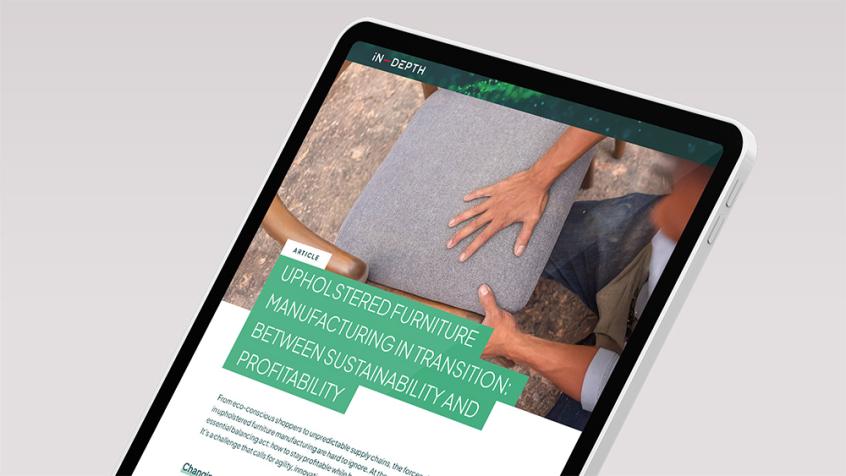Optimize your cutting room for small-series and custom-made furniture
How digital technology is enabling furniture manufacturers to thrive in a fragmented market

The furniture industry
It is facing a dramatic change in consumer demand and its top decision-makers are seeking to strike the perfect balance between process transformation and business continuity. Furniture executives in charge of operations are strengthening their organization’s competitive position in the marketplace by adapting their business processes to succeed in a highly fragmented furniture market and meet consumer demand for customized products at competitive prices.
Why small-series and custom-made furniture helps manufacturers to capitalize on new opportunities
In producing small-series and customized furniture, operational leaders are able to maximize efficiency, minimize waste, and increase productivity. Furniture executives, for the first time are empowered to build for their companies’ greater resilience against market volatility and capitalize on new opportunities without negatively influencing their existing revenue streams.
For all of the operational advantages offered by small series and mass-customization—reducing cycle time; optimizing cost per piece; and greater visibility and control of cutting room operations—there are two major cutting room challenges to overcome—managing material constraints and complex motifs—if manufacturers are to be successful at delivering the innovative products that today’s furniture consumers want.
Furniture executives seeking to produce high quality, personalized and on-demand furniture with ease, will need to streamline their preparation and cutting tasks and reduce their dependency on in-house expertise. The impact of the Covid-19 crisis on manufacturing trends has heightened the importance of digitalization and automation for the furniture industry. The key to success lies in shortening cycle time, optimizing costs and responding faster to changes.
How digitalization and automation improves cutting preparation and execution
By storing fabric-handling information in a digital library, furniture manufacturers can process patterned fabrics and manage material constraints with far greater ease. Digital libraries offer ready access to a wide variety of material characteristics, constraints and marker-making rules, enabling furniture manufacturers to generate cutting jobs in just a few minutes by instantly gathering all cutting information including, nesting, cutting parameters and fabric information.
Managing fabric pattern complexity with a digital solution enables furniture manufacturers to take advantage of automatic motif recognition and cut motif fabric as fast as plain fabric. This enhancement to cutting performance not only enables manufacturers to accelerate their cutting process but also make smarter material usage decisions to lower their production costs.
In harnessing the reliability and consistency of automation, furniture manufacturers can create and process a wide variety of markers much faster than manual processes to significantly improve their marker efficiency. Automatic marker making in the cloud allows companies to run multiple marker lists simultaneously to save time and optimize material usage.
Conclusion: Accelerate production with less waste and lower operational costs
To streamline their production processes many furniture companies are shortening their production cycles by using cloud-based software—connecting their IT system with their cutting room—to automatically process customer orders and send all necessary production information directly to the cutting equipment without any human intervention.
Reduce labor costs and the need to rely on a highly-expert labor pool. The automated transmission of fabric-handling requirements and settings not only makes it easier to manage labor constraints but also minimizes the risk of operator error in the cutting room, prevents waste and optimizes fabric usage for the most challenging patterns and material constraints.
By digitizing the cutting preparation and execution phases, furniture manufacturers are able to overcome production challenges associated with small-series and custom-made furniture to successfully meet the demands of the new furniture consumer. To learn more, download our report Manufacturing customized furniture with ease: Overcoming material constraints and motif management challenges and discover how manufacturers are achieving success in a highly fragmented furniture market.
Overcome material constraints and motif management challenges
Related Content









